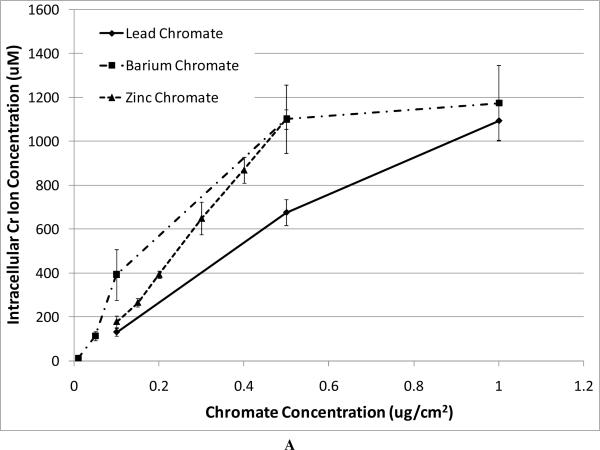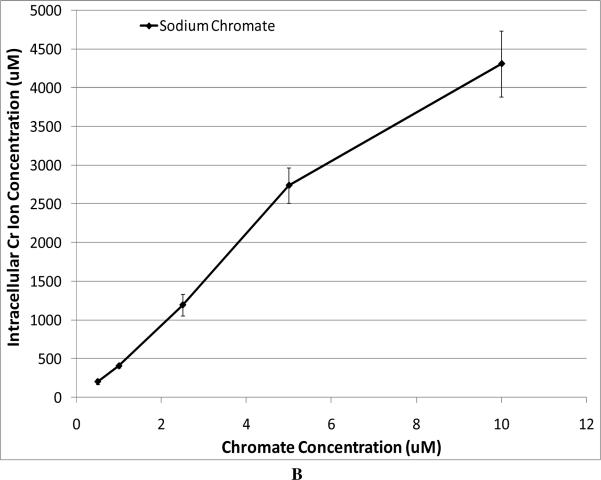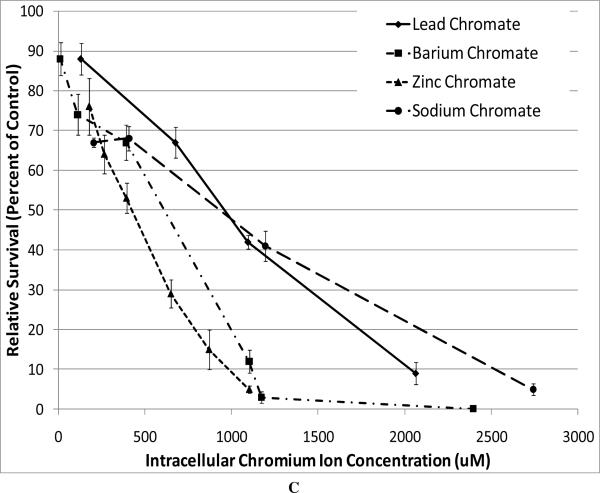Figure 2. Intracellular Cr Ion Concentration after Exposure to Four Cr(VI) Compounds.
This figure shows the intracellular Cr concentrations achieved by the administered concentrations of the chromium compounds and compares the intracellular Cr concentration to the measured effects. All administered concentrations of the chromium compounds induced statistically significant increases in intracellular chromium ion concentrations (p < 0.05). Data represent an average of at least three experiments ± SEM for all four compounds. Panel A shows that exposure to particulate chromates (lead chromate, barium chromate and zinc chromate) induced concentration-dependent increases in intracellular Cr ion concentrations. All administered concentrations of lead chromate and zinc chromate induced a statistically significant increase in intracellular chromium ion concentrations (p < 0.05). For lead chromate, administered concentrations of 0.1, 0.5, 1 and 5 ug/cm2 yielded intracellular Cr concentrations of 131, 677, 1095 and 2065 uM respectively; for zinc chromate administered concentrations of 0.1, 0.15, 0.2, 0.3, 0.4 and 0.5 ug/cm2 yielded intracellular Cr concentrations of 179, 266, 394, 650, 870, and 1102 uM, respectively; for barium chromate administered concentrations of 0.01, 0.05, 0.1, 0.5, 1, and 5 ug/cm2 yielded intracellular Cr concentrations of 13, 113, 393, 1103, 1174, and 2396 uM, respectively. Concentrations of 0.05, 0.1, and 0.5 ug/cm2 barium chromate induced statistically significant increases in intracellular chromium ion concentrations (p < 0.05). Comparing the particulate compounds, only the concentration of 0.5 ug/cm2 induced a statistically significant difference in chromium ion concentration between lead chromate and zinc chromate (p < 0.001).
Panel B shows that exposure to soluble (sodium) chromate induced concentration-dependent increases in intracellular Cr ion concentrations. For soluble chromium, administered treatments of 0.5, 1, 2.5, 5, and 10 uM sodium chromate yielded intracellular Cr concentrations of 204, 407, 1195, 2740, and 4313 uM, respectively. Panel C shows the cytotoxic effect of all four compounds corrected for intracellular chromium ion concentration. Barium chromate and zinc chromate were significantly more cytotoxic than lead chromate and sodium chromate (p < 0.005); there was not a significant difference between barium chromate and zinc chromate or between lead chromate and sodium chromate.



